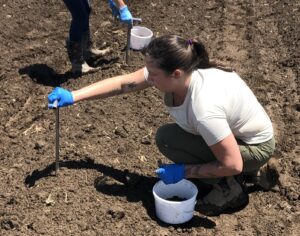
Managing Tobacco Mosaic Virus (TMV) in Tobacco
Tobacco Mosaic Virus (TMV) is one of the most persistent and easily spread viruses in tobacco. Here’s what you …


El inglés es el idioma de control de esta página. En la medida en que haya algún conflicto entre la traducción al inglés y la traducción, el inglés prevalece.
Al hacer clic en el enlace de traducción se activa un servicio de traducción gratuito para convertir la página al español. Al igual que con cualquier traducción por Internet, la conversión no es sensible al contexto y puede que no traduzca el texto en su significado original. NC State Extension no garantiza la exactitud del texto traducido. Por favor, tenga en cuenta que algunas aplicaciones y/o servicios pueden no funcionar como se espera cuando se traducen.
Inglês é o idioma de controle desta página. Na medida que haja algum conflito entre o texto original em Inglês e a tradução, o Inglês prevalece.
Ao clicar no link de tradução, um serviço gratuito de tradução será ativado para converter a página para o Português. Como em qualquer tradução pela internet, a conversão não é sensivel ao contexto e pode não ocorrer a tradução para o significado orginal. O serviço de Extensão da Carolina do Norte (NC State Extension) não garante a exatidão do texto traduzido. Por favor, observe que algumas funções ou serviços podem não funcionar como esperado após a tradução.
English is the controlling language of this page. To the extent there is any conflict between the English text and the translation, English controls.
Clicking on the translation link activates a free translation service to convert the page to Spanish. As with any Internet translation, the conversion is not context-sensitive and may not translate the text to its original meaning. NC State Extension does not guarantee the accuracy of the translated text. Please note that some applications and/or services may not function as expected when translated.
Collapse ▲
Tobacco Mosaic Virus (TMV) is one of the most persistent and easily spread viruses in tobacco. Here’s what you …

Codling moth degree-day accumulations range from about 370 in Henderson County (2100 ft) to about 600 in the lower …

Ornamental Extension Specialists and Area Agents are gauging growers’ interest in an education conference in North Carolina. The conference would …

Root Cause Reports Turning Local Problems into Statewide Solutions Beans Gone Wild began as a tool to capture and share real-time …

Recent hail in some orchards will surely affect decisions on continuing to invest in pesticide costs, but for those …

Glyphosate has long been a cornerstone herbicide for weed control across a range of cropping systems. However, its widespread …

Codling Moth: The cooler weather pattern has slowed degree-day accumulations, and consequently codling moth development has fallen behind last …

In the past couple of weeks we have seen a few cases of watermelon seedlings infected with gummy stem …

The corn leafhopper (Dalbulus maidis) is a pest of corn that typically lives in warm places, such as areas …

With petal fall sprays completed throughout the region, the focus for the next few weeks will be on first …

With planters rolling, we urge growers to think about thrips management now. This article will cover 1) the Thrips Infestation …
The Thrips Infestation Predictor for Cotton is now working correctly. This follow up article details how to use best this …

The majority of apples throughout the region are at petal fall, with some later cultivars still blooming. As discussed …
The NC State University Thrips Infestation Predictor for Cotton is currently experiencing technical issues and is not forecasting thrips …

Petal fall is a critical time for management of plum curculio, and potentially oriental fruit moth and rosy apple …

With trees either in or approaching bloom, hopefully orchards have received an oil application at green tip for early …

The North Carolina Department of Agriculture and Consumer Services (NCDA & CS) is offering free services for counties affected …

With low cotton prices, growers are rightly looking to reduce the cost of production. This previous article details why …

With cotton prices down, many growers are looking for ways to cut production costs. This article emphasizes the importance …
Every year, entomologists from the National Cotton States Arthropod Pest Management Working Group are polled on insecticide efficacy. This …